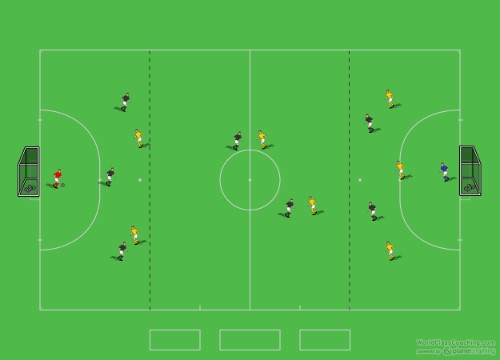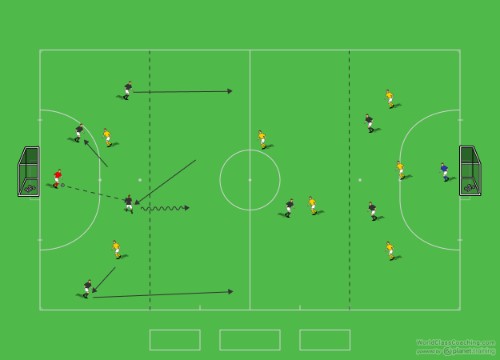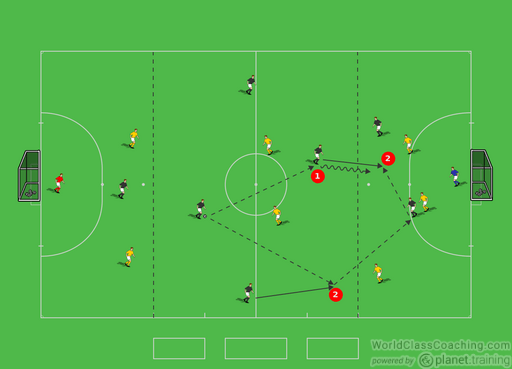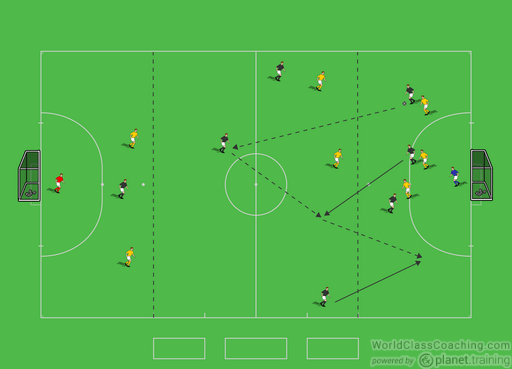By Sean Pearson
Area Size: 32 x 45 Yards
Teams: 15 mins
Players: 8 v 8
Objectives
- For the deep midfielder to understand their role
- For the attacking midfielder to understand their role
Set-Up
Three zones separate the sections of the team, defense, midfield and attack. In the defensive section it should be 4v2, midfield section 2v2 and attacking section 2v4.

Execution
When playing out the back, whenever there is an opportunity for the deeper midfielder (known as the #6) to drop down and receive a pass from the goal keeper they should move into the defensive zone to overload the area even more. They should look to do this when the defense splits and the strikers go with them. Upon receiving the ball the deeper midfielder looks to move the ball out of the area through travelling with the ball. At the same time the full backs should look to move forward to create width and to overload the middle zone against the 2 defenders.

When moving out of the defensive zone the deeper midfielder must now realize their role is to both find an option forward and be in a position to both support the attack and help screen the defense if the team lose possession.
The attacking midfielder (known as the #10)
1) looks to get behind the lines of the defending midfielders. They receive with an open body position and look to drive forwards with the ball as they enter the attacking zone they are free to shoot. If a defender comes to stop the shot, they aim to assist in one of the strikers to shoot.
2) If a striker receives the ball from another source and is unable to turn the attacking midfielder can enter the attacking zone and look to shoot after a set back to them from the striker.

If an attack slows with the attacking midfielder inside the attacking zone the deeper midfielder should look to be an option to play back to. The attacking midfielder should then drop back into the midfield zone to open up the attacking zone again and create space to attack into. The attacking midfielder’s role is to then see which option is best to attack. Below it would be to have the wide player advance further into the space on that side of the field. Other times it might be again to drive forwards and shoot or set up a striker.

Role of the #6: To help the defense playing out the back, to facilitate attacks by using their passing range and to be at supportive angles when the ball is ahead of them to recycle the ball.
Role of the #10: To get into positions behind the lines of the opposition and look to influence the attack by driving forwards with the ball or creating opportunities for others to attack and possible shoot.
Variations
- Change the formation both teams use
- Play with different formations for each team to challenge the player’s roles
By Sean Pearson. Sean is also the author Coaching Team Shape in the 3-3-1, Coaching Team Shape in the 4-2-3-1 and Coaching Team Shape in the 4-3-3


